- Home
- Joan Lowery Nixon
The Statue Walks at Night
The Statue Walks at Night Read online
The Statue Walks at Night
Casebusters #1
Joan Lowery Nixon
Illustrated by Kathleen Collins Howell
With love to Brian and Sean Quinlan, my inspiration for the Casebusters
—J.L.N.
Contents
Chapter One
Chapter Two
Chapter Three
Chapter Four
Chapter Five
Chapter Six
Chapter Seven
Chapter Eight
Chapter Nine
CHAPTER ONE
SEAN QUINN SHOVED HIS chair back from the dinner table.
“I’m not going to take a bath tonight,” he announced to his family. “Sam Miyako said that alligators can travel thousands of miles through sewers, from city to city, and suddenly pop up in your bathtub.”
Mrs. Quinn sighed. “Sam Miyako strikes again,” she said.
Brian, Sean’s thirteen-year-old brother, narrowed his eyes. “And if they’re big enough,” he said teasingly, “they could crawl out of the bathtub and into your bedroom.”
“The story’s not true,” Mr. Quinn explained to Sean. “In the first place, sewers are not connected from one city to another.” As his father explained to Sean about city regulations and sewer systems, Sean began to fidget.
“But Sam Miyako says it’s true,” Sean insisted.
Mrs. Quinn gave Brian a stern look. “I like Sam,” she told Brian. “And I’m glad he’s your best friend. But he has got to stop trying to scare the younger children.”
“I’m not so young, Mom,” Sean insisted, and sat up taller. “I’m nine.”
“Isn’t that too old to believe everything Sam Miyako tells you?” Mr. Quinn asked Sean.
Sean shrugged. “I guess so.”
“I’ll make you a promise,” Mrs. Quinn said. “If an alligator does show up in the bathtub, you can keep him for a pet.”
Sean thought for a moment. The idea of having an alligator in his bathtub was scary, but it was fun thinking about having one as a pet. No one else in his class would have an alligator as a pet, Sean thought. Not even Miss Know-It-All, Debbie Jean Parker.
Suddenly an alligator in the bathtub didn’t seem so scary.
“Thanks, Mom,” Sean said, grinning.
The doorbell rang as Brian and Sean finished clearing the table, and Mrs. Quinn got up to answer it. In a few minutes Mrs. Maggie Gomez, the curator of the Redoaks County Museum, followed Mrs. Quinn into the kitchen.
“John,” Mrs. Gomez said. “Thank goodness you’re home.”
Mr. Quinn stood. “Maggie, you know our boys, Brian and Sean,” he said.
“Of course,” Mrs. Gomez answered, and smiled. “John,” she said, turning back to Mr. Quinn, “something terrible has happened at the museum. I want to hire you as a private investigator.”
“We’ll talk in the den, where it’s more comfortable,” Mr. Quinn said. He turned to Brian and Sean. “Suppose you boys say good night.”
Brian and Sean said good night, then started up the stairs. But halfway up, Brian stopped.
“Suppose you go upstairs,” he whispered to Sean, “isn’t the same as ‘You have to go upstairs,’ is it?”
“No,” said Sean, catching on. “And ‘Something terrible at the museum’ sounds like an interesting case for a pair of private investigators!”
“Like us,” Brian and Sean said together.
Growing up with a father who was a professional private investigator, Brian and Sean had had many opportunities to help him on his cases. It began because Mr. Quinn liked to “talk out a case” with himself. Talking out loud, he said, helped him think. Brian and Sean liked listening to their father. Sometimes he would stop talking and ask them what they thought about a case.
Brian and Sean especially liked that their father didn’t consider their questions or comments silly just because they were kids. He said that being a kid could actually be an advantage to an investigator. A kid could look at something with a different perspective than an adult, he said. And being able to look at evidence from different angles was often the key to cracking a case.
After a while, Mr. Quinn began to treat Brian and Sean almost as if they were his assistants. Their help had paid off, too. In one recent case, for instance, Brian and Sean had helped their father prove that it wasn’t a ghost who was haunting the Pine Tree Inn. In another case, Brian and Sean had uncovered evidence that called into question the authenticity of a mysterious photograph of “Bigfoot.”
From where they sat on the stairs, Brian and Sean could hear the urgency in Mrs. Gomez’s voice.
“The Redoaks County Museum has what is claimed to be a foolproof security system,” she explained, “but in spite of all our precautions, two extremely valuable sketches by Leonardo da Vinci are missing.”
“Missing?” said Mr. Quinn. “Do you mean stolen?”
Mrs. Gomez sighed. “Yes.”
“I’m familiar with the galleries in your museum, Maggie, but I don’t remember any da Vinci sketches,” Mr. Quinn said.
“The sketches don’t belong to the museum,” Mrs. Gomez said. “That’s what makes the theft even worse. They’re from a traveling exhibit on loan from the Metropolitan Museum of Art in New York. We’ve heavily advertised the exhibit, and it’s scheduled to go on display in just one week. If the sketches aren’t found by then…” Her voice broke as she cried, “I’m responsible for the safety of that collection, John! What am I going to do?”
“Maggie,” Mr. Quinn said in his calm, professional private investigator’s voice. “Call the police about the theft. They’ll be able to search the museum. Also, they’ll be able to get warrants to search your employees’ homes. That’s something that as a private investigator I don’t have the legal right to do.”
“I have called the police,” Mrs. Gomez told him. “That’s the first thing I did. I also called our insurance company. I was told by the manager of their theft division that ordinarily they would bring in one of their own investigators immediately. But sometimes they prefer to hire private investigators, especially in cases that need to be solved quickly—like this one. He gave me your name, John. He knew you’d not only be efficient but would keep the situation as quiet as possible.”
“Then let’s start with a few questions,” Mr. Quinn said.
Brian imagined that his father had pulled out the notebook and pen he always carried with him. A notepad and a pen, his father had explained many times before, are a private investigator’s most important tools. Brian, who planned to someday become a private investigator, too, pulled his own notebook and pen from a pocket in his jeans.
“Tell me the story from the beginning,” Mr. Quinn urged, “noting exactly when you discovered that the sketches were missing.”
“The cartons arrived three days ago,” Mrs. Gomez said, “on Friday afternoon. My staff and I looked through them, checked the list, and everything was included. So I shelved the cartons in a special locked cabinet inside our large storeroom.”
“Is the storeroom kept locked?” Mr. Quinn asked.
“No. Not during working hours. That would be inconvenient. And it’s never been necessary,” she said, “until now. I thought the exhibit material was safe, but this evening, when I took out the cartons to decide how to arrange the pieces in the exhibit, I discovered that two da Vinci sketches had been removed from their frames.”
“Was the cabinet broken into?” Mr. Quinn asked.
“No.”
Mr. Quinn looked up from his notepad. “Then whoever stole the art must have used a key.”
Mrs. Gomez nodded. “My key, I’m afraid.”
Mr. Quinn frowned. “How can you be so sure?” h
e asked.
Mrs. Gomez was embarrassed. “It’s no secret that I keep the key in my top desk drawer,” she said. “I guess it’s not the safest place I could have thought of, but visitors aren’t allowed back in the offices.” She sighed. “After the theft I noticed that the key was not in its customary place in my drawer. Someone obviously had removed the key, then put it back. It’s terrible to think that the thief is probably someone on my staff.”
“Do all the employees know about the theft?” Mr. Quinn asked.
“The museum’s security guard was there when the police arrived,” Mrs. Gomez answered. “I telephoned my assistant, James Vanstedder. The other employees will be told tomorrow morning.”
Mrs. Gomez took out a piece of paper from her briefcase and unfolded it on the table. “Here’s a floor plan of the museum,” she said. “You can see that the offices are together, in the back.”
Mr. Quinn asked, “Where’s your key to the cabinet now?”
“Here, with me, so that I won’t have to worry about losing anything else in the collection.”
“I assume all the items in the exhibit are valuable?”
“Oh yes,” Mrs. Gomez said. “Some lovely, small Monet paintings, a Rembrandt drawing, and many other beautiful pieces. Everything in the collection is extremely valuable.”
“Then I suggest that first thing tomorrow you call a locksmith to change the lock on the cabinet in which the exhibit pieces are stored. The thief could return. Most likely, he—or she—has already made a duplicate key.”
Mrs. Gomez gasped.
Mr. Quinn asked, “How small were the sketches? Could they have been slipped into someone’s pocket?”
“Not likely,” Mrs. Gomez said. “One is about sixteen inches by eighteen inches. The other is a little larger. Folding would ruin them. Because the thief carefully removed the sketches from their frames, I’m guessing that he’d know better than to fold them.”
“But the sketches could be rolled, couldn’t they?” Mr. Quinn asked. “And possibly carried out inside someone’s clothing?”
Mrs. Gomez thought for a moment. “They could be tightly rolled, I suppose. But I should think it would be difficult to carry them out in that manner. Visitors to the museum are required to check all bags and jackets at the entrance. And our security guard is authorized to search bags and clothing as well. The sketches would be easy to detect, say, inside a sleeve or jacket. They would have made a suspicious bulge.”
“Something about the theft puzzles me,” Mr. Quinn said. “The missing sketches are from a famous artist. How could the thief expect to sell them without getting caught? Everyone he tried to sell them to would know the sketches belonged in a museum. Also, why would he take just the two pieces when everything in the collection is valuable?”
“You’d be surprised at the large market for stolen art,” Mrs. Gomez said sadly. “There are wealthy art collectors all over the world who knowingly buy stolen pieces and keep them in their own private collections, where they can’t be discovered. Often, certain items are stolen on order.”
“On order?” asked Mr. Quinn.
“Yes,” said Mrs. Gomez. She explained, “It’s not unheard-of that a wealthy art patron who has had his or her eye on a specific work of art might actually hire thieves to steal it. I suspect that is what happened with the two da Vinci sketches.”
“That would explain why only two pieces were stolen,” Mr. Quinn said. “Maggie, tell me about your employees.”
Mrs. Gomez sighed. “The theft must have taken place on either Saturday or Sunday. I can tell you where all the employees were at the time.”
As she spoke, Brian took notes as fast as he could. When she finished, he sighed with relief and rubbed his hand.
Mr. Quinn resumed questioning Mrs. Gomez. “Is there a possibility that the sketches haven’t been removed from the museum yet?”
Mrs. Gomez looked confused. “Why would a thief hide the sketches in the museum?”
“It occurred to me,” Mr. Quinn explained, “that whoever took the sketches might have only temporarily hidden them.”
“The police already searched through the employees’ desks,” Mrs. Gomez said, “and through all the file cabinets and in the storeroom, with no luck. They even searched behind the larger paintings hanging in the galleries. I can’t imagine where the art could be hidden.”
Mr. Quinn nodded. “I’ll need a complete list of the items in the collection, including a full description of each work of art and its estimated value,” Mr. Quinn said. “Also, I’ll need a list of all your employees and their personnel files.”
Brian and Sean exchanged a knowing look. As usual, their father was going to begin his investigation with a computer search. The object of the search was to discover as much as he could about the museum employees. Then the information would be used to create profiles of possible suspects.
Computers were a useful tool, but as Brian and Sean knew, a computer search took time. And time was something they didn’t have a lot of.
“Sean!” Brian whispered later, after his father had concluded his interview with Mrs. Gomez. “Come on upstairs. Quick! We need to talk.”
CHAPTER TWO
BOTH BOYS WERE SEATED cross-legged on Brian’s bed, facing each other. Brian flipped open his notebook.
“Listen again to what Mrs. Gomez said about her employees and see if anything sounds strange to you,” he said. He began to read aloud from his notes.
“Hilda Brown, Mrs. Gomez’s secretary, has been away from the museum since Saturday afternoon, taking care of her elderly mother, who’s ill. She’ll return tomorrow—Tuesday.”
“Nothing suspicious about that,” Sean said. Brian agreed.
“Dave Brandon, the museum’s newest employee, had the weekend off. He went to San Francisco to talk to an art investor who is considering buying two paintings from a New York dealer and donating them to the museum.”
“Bri,” Sean said, “do you think Dave Brandon could really be trying to sell that dealer two sketches?”
“It’s possible,” Brian said, and continued reading.
“Charles Wang is head of the museum’s financial department. When the theft occurred, he supposedly was at home with the flu. James Vanstedder, Mrs. Gomez’s assistant, hurt his right leg while waterskiing Saturday.”
“Didn’t Mrs. Gomez say she telephoned him as soon as she discovered the theft this evening?” Sean asked.
“That’s right,” Brian said. “He came into work today, even though he hobbled around, leaning on a cane.”
“Who’s next?” Sean asked.
“Harvey Marshall,” Brian said, “the elderly custodian. He was around the entire weekend, but Mrs. Gomez insists that she trusts him completely.”
Brian flipped to the final entry in his notebook.
“Last on her list was George Potts, the security guard. Mrs. Gomez trusts him, too, because the only time George ever comes near the offices is when he walks his rounds each evening, making sure that everything is locked up securely and the alarms are in good order.”
“Only two of the people on that list were in the museum the whole time,” Sean said. “The custodian and the security guard.”
Brian thought for a moment. “We have to go over there,” he said.
“But Dad said he’s going to check on the employees,” Sean reminded him.
“I know that,” Brian answered. “But that will take time. You and I can help Dad in the meantime by making a thorough search of the museum.”
“You mean,” Sean asked, “even the Egyptian room?”
Brian frowned. “C'mon, Sean,” he said. “Don’t tell me you’re still spooked about that dumb Anubis story.”
“Heck no,” Sean said. “I mean, not really.”
On display in the Egyptian room was a mummy with its finger bones poking through the rotted wrappings. The display gave Sean the creeps. But even worse, watching over that mummy was a large bronze statue of the ancient Egyptian p
rotector of mummies, the jackal-faced Anubis.
Sam Miyako had convinced Sean that everyone knew that the statue of Anubis arose and walked at night!
Sean had had nightmares about the statue ever since. Each time he dreamed that the statue came to life and walked slowly toward him. Sean always woke up yelling.
“All sorts of strange things happen in museums at night,” Sam had told Sean.
“It’s just a silly legend,” Sean’s father had explained. “The statue is made out of bronze. And bronze is an alloy of copper and tin—metals. Metals don’t walk.” He then had gone on to describe for Sean in tedious detail the unique chemical properties of bronze, none of which Sean could understand.
His mother had tried a less scientific but no less logical approach with Sean.
“The story doesn’t make sense when you think about it,” Mrs. Quinn had said. “No one’s ever in the museum at night, which means that even if the statue tap-danced, no one would see it.”
Sean had to admit that his mother was right. The story didn't make sense. Now, however, even thinking about Anubis made Sean shiver. He thought of the darkened museum, and Anubis with its gleaming eyes, and him alone in the museum!
Sean groaned. He had been excited by this new case. But now he was wondering if it would really be such fun after all.
CHAPTER THREE
THE NEXT DAY IN class at Redoaks Elementary School, Sean couldn’t keep his mind on what he was reading or on what his teacher, Mrs. Jackson, was saying. He was too excited thinking about the museum and trying to imagine where the thief might have hidden the da Vinci sketches. For some reason, sitting in class, Sean wasn’t as scared by the Anubis story. He was even looking forward to going to the museum.
In history class that afternoon, Sean noticed that something black and lumpy was crawling slowly across his desk. He held his breath. It was a large, hairy tarantula!
“Aaaah!” screamed Sean.
Across the aisle Debbie Jean Parker giggled. Some of the other kids seated near Sean began to laugh, too.

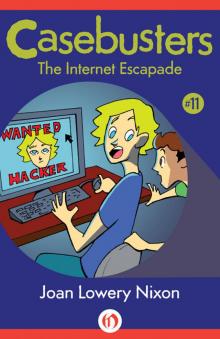 The Internet Escapade
The Internet Escapade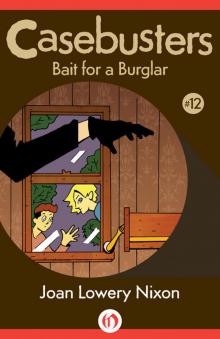 Bait for a Burglar
Bait for a Burglar A Place to Belong
A Place to Belong Nightmare
Nightmare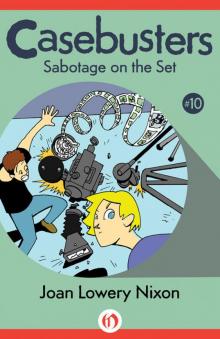 Sabotage on the Set
Sabotage on the Set The Other Side of Dark
The Other Side of Dark Whispers from the Dead
Whispers from the Dead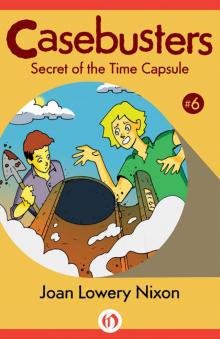 Secret of the Time Capsule
Secret of the Time Capsule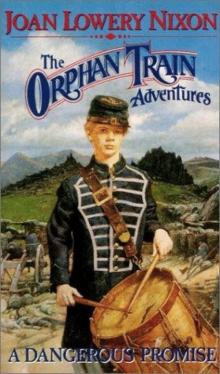 A Dangerous Promise
A Dangerous Promise Laugh Till You Cry
Laugh Till You Cry Spirit Seeker
Spirit Seeker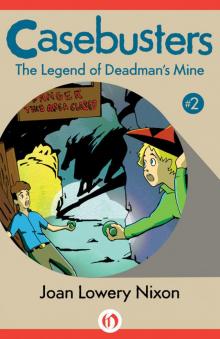 The Legend of Deadman's Mine
The Legend of Deadman's Mine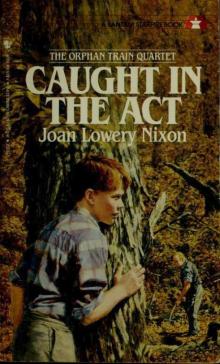 Caught in the Act
Caught in the Act Check in to Danger
Check in to Danger Ellis Island: Three Novels
Ellis Island: Three Novels The Name of the Game Was Murder
The Name of the Game Was Murder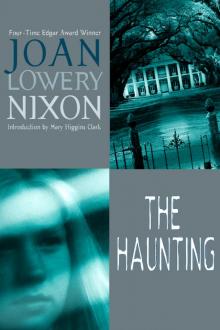 The Haunting
The Haunting Lucy’s Wish
Lucy’s Wish Playing for Keeps
Playing for Keeps A Family Apart
A Family Apart Nobody's There
Nobody's There Shadowmaker
Shadowmaker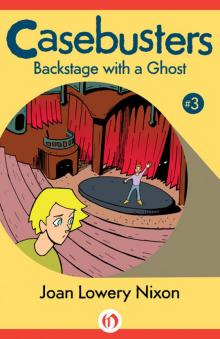 Backstage with a Ghost
Backstage with a Ghost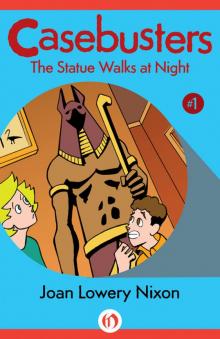 The Statue Walks at Night
The Statue Walks at Night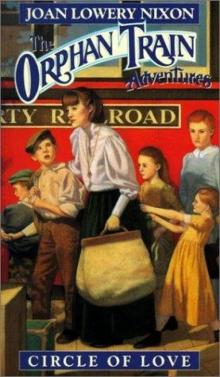 Circle of Love
Circle of Love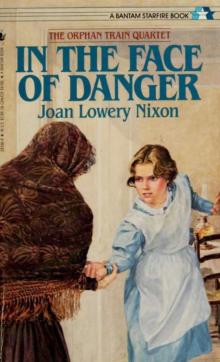 In the Face of Danger
In the Face of Danger Ghost Town
Ghost Town A Candidate for Murder
A Candidate for Murder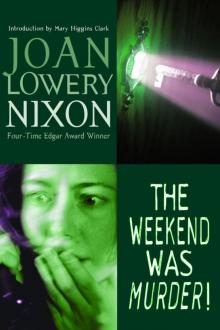 The Weekend Was Murder
The Weekend Was Murder The Island of Dangerous Dreams
The Island of Dangerous Dreams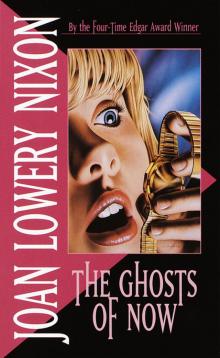 The Ghosts of Now
The Ghosts of Now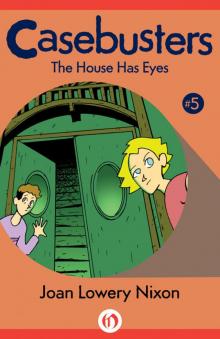 The House Has Eyes
The House Has Eyes The Dark and Deadly Pool
The Dark and Deadly Pool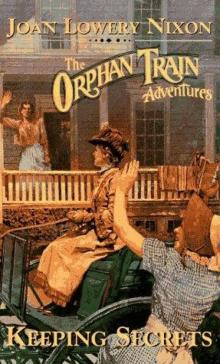 Keeping Secrets
Keeping Secrets Secret, Silent Screams
Secret, Silent Screams Beware the Pirate Ghost
Beware the Pirate Ghost Search for the Shadowman
Search for the Shadowman Haunted Island
Haunted Island